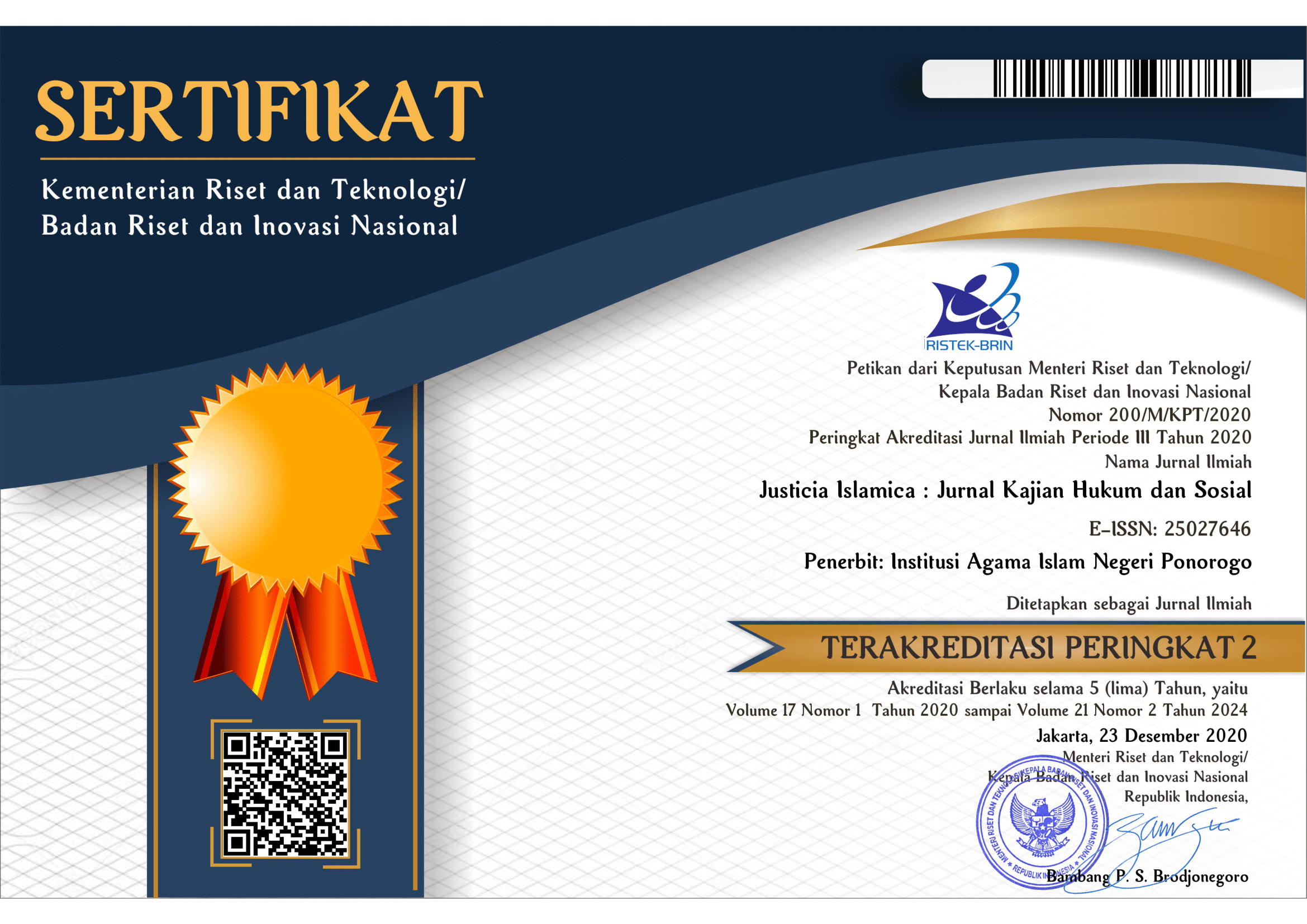Analisa terhadap Batasan Minimal Usia Pernikahan dalam UU. No. 1 Tahun 1974
DOI:
https://doi.org/10.21154/justicia.v12i1.262Abstract
This article discusses the judicial review process on the minimum age of marriage as stipulated in Marriage Law No. 1 of 1974. The age limit permitted in a marriage according to Law No.1 of 1974 is if the male party has reached the age of 19 (nineteen) years, and the female party has reached the age of 16 (sixteen) years. Meanwhile, in the Compilation of Islamic Law stipulated in Article 15 paragraph (1), for the benefit of families and households, marriage may only be carried out by prospective brides who have reached the age stipulated in Article 7 of Law No. 1 of 1974. According to the Civil Law in Article 29 determines; Every man who has not reached the age of 18 full years and a woman who has not reached the age of 15 full years, is not allowed to enter into marriage, but if there are important reasons the President can waive the prohibition by giving dispensation. This is contrary to Law No. 23 of 2002 on Child Protection, which states that a child is someone who is not yet 18 years old. The existence of different rules for the category of adult age in various laws and regulations needs to be tested in the Constitutional Court, so the minimum age limit for marriage is very necessary for prospective brides and grooms.
Downloads
Published
Issue
Section
License
Copyright (c) 2015 Justitia

This work is licensed under a Creative Commons Attribution-ShareAlike 4.0 International License.
Requirements to be met by the author as follows:
- Author storing copyright and grant the journal right of first publication manuscripts simultaneously with licensed under the CC BY-SA allows others to share the work with a statement of the work's authorship and initial publication in this journal.
Authors can enter into the preparation of additional contractual separately for the non-exclusive distribution of a decadent version of the journal issue (e.g., post it to an institutional repository or publish it in a book), with the recognition of initial publication in this journal.
Authors are allowed and encouraged to post their work online (e.g., in institutional repositories or on their website) before and during the submission process because it can lead to productive exchanges and citations earlier and more severe than published works. (see The Effect of Open Access).
This work is licensed under CC BY-SA.


















